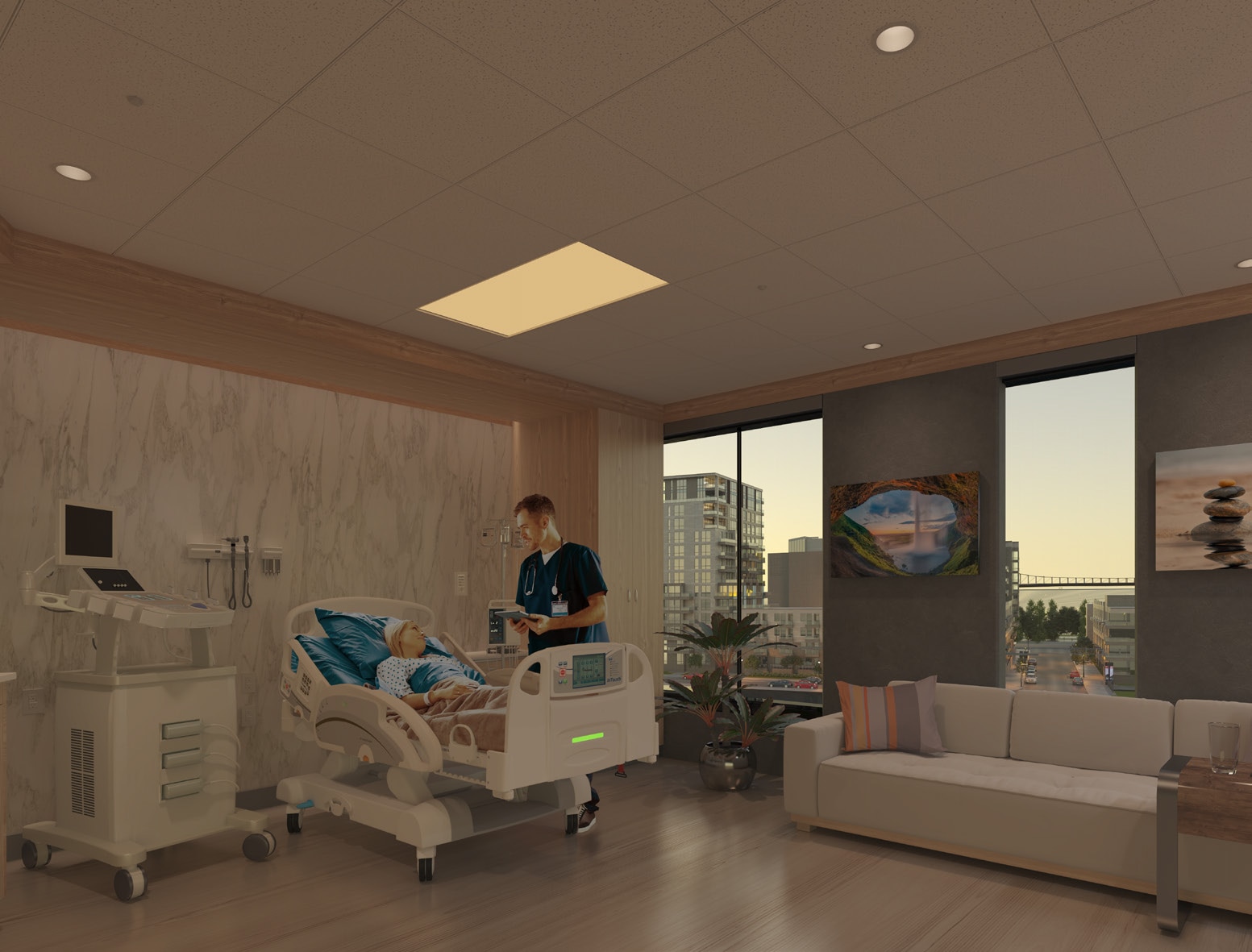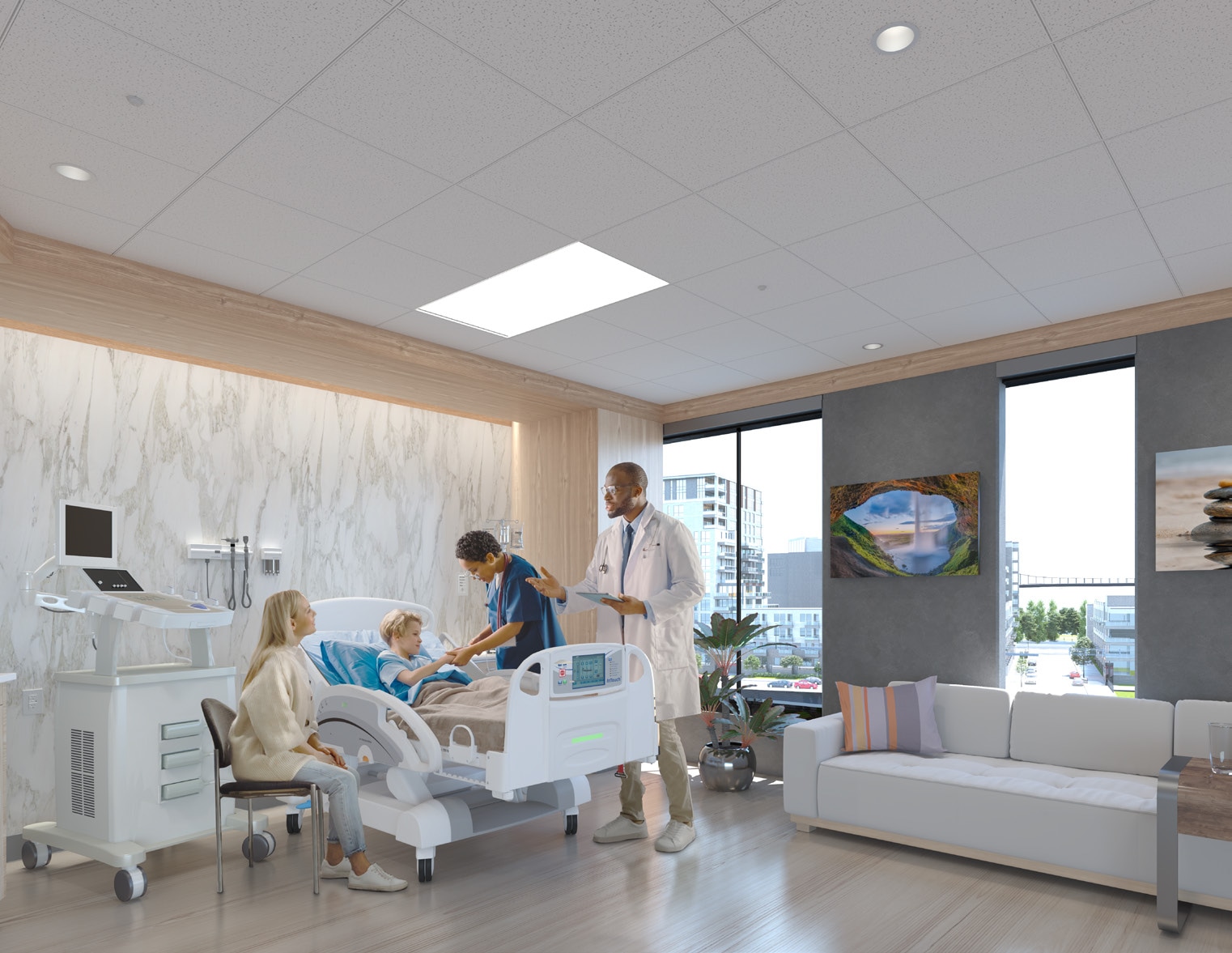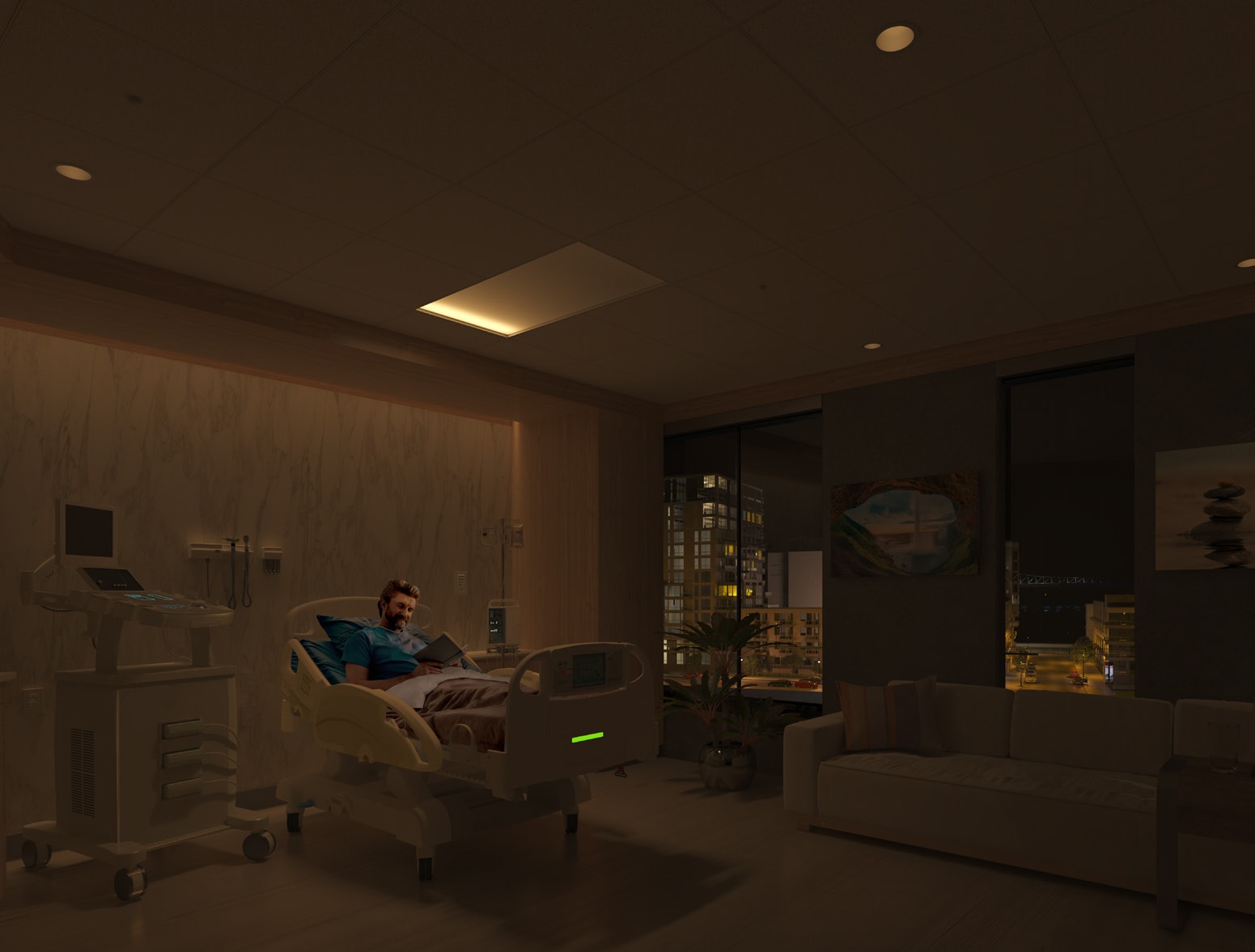Light has a profound effect on people. The reason is simple; light is the most powerful regulator of our circadian rhythm. Light has visual, biological, and emotional benefits. This is paramount for human-centric lighting that supports health and well-being.
Your internet browser isn't supported.
Why melanopic light?
We've become the indoor generation. On average, we spend a significant portion of our time indoors, with one third in average of that spent in the workplace. And if we spend too much time indoors, we don’t receive enough exposure to melanopic light, and we miss out on the beneficial effects it has on our wellbeing to help us:

See well

Feel well

Function well
How light lets us do more than see the world around us.
This is where melanopic lighting comes in. It is biological light that contributes to stimulating other biological functions / non-visual responses, including the creation of melatonin and cortisol, which drives our internal circadian rhythms and helps us function better.
4 ways to increase melanopic light levels:

1: Use more daylight
Daylight is a great source of melanopic light, but it often leads to expensive building design. Mitigating glare is a challenge. And depending on location, daylight may not always be optimum.

2: Use more light
Increasing average light levels using luminaires with higher lumen output or adding more luminaires are options, but they’ll increase your energy costs. And you’ll have more glare to deal with.

3: Use cooler CCTs
You could try tunable white lighting that follows natural daylight temperature cycles, creating cooler light at specific times of day. But not everyone likes light that’s cool enough to have an impact.

4: Use increased melanopic spectrum
Indoor melanopic lighting such as BioUp from Cooper Lighting Solutions includes a peak (the cyan part of the spectrum) that provides melanopic lighting without additional lights, higher lumen levels, and associated energy costs.

Press Release
BioUp: 2024 IES Progress Report Selection
Cooper Lighting Solutions BioUp has been selected for inclusion in the 2024 Illuminating Engineering Society (IES) Progress Report! The annual IES Progress Report serves as a beacon for groundbreaking advancements in the field of illuminating engineering. Many Cooper Lighting Solutions products have been recognized by the IES Progress Report for 14 of the past 16 years, proving its commitment to excellence and innovation, propelling the lighting industry forward.
How it works
We enhance the LED spectrum with cyan light that increases the melanopic-DER or melanopic-EDI of our lighting to achieve the desired level of melanopic light.

Melanopic DER
The melanopic daylight efficacy ratio measures how an artificial light source compares to daylight. A ratio of 1 indicates equivalence to daylight. Generally, artificial lighting falls below 1. Melanopic lighting has a 42% higher ratio than standard LEDs, without altering visual perception or light output. This graph shows the peak in the cyan wavelength, aligned with biological active light.

Static spectrally enhanced LED
The static option, which provides enhanced melanopic lighting performance, is ideal for applications with mostly daytime usage by workers and/or visitors, such as offices, institutional, and public buildings. It’s a cost-efficient and simple way to enjoy the benefits melanopic lighting.

Dynamic tunable white + spectrally enhanced LED
The dynamic option is an advanced solution adapted to spaces with daytime and nighttime usage, such as hospitals, schools, and airports. Combined with our WaveLinx intelligent digital lighting solution, the melanopic portion of the light is adjusted throughout the day.
Who benefits from melanopic lighting?
More application lighting designs now include spectrally enhanced lighting, thanks to the melanopic lighting LEDs, including healthcare, office, and education applications. See the Healthcare patient room application example:
Featured products: Fail-Safe 2x4 APR ArcMED and Portfolio 4" & 6" Recessed Downlights

Morning

Morning lighting should reflect the sunrise lighting spectrum, with primary light colors in the red at a moderate intensity.

Daytime

Daytime lighting should be primary in the cooler colors, including a peak in the range, to maximze melanopic lighting at a relatively high intensity.

Nighttime

Nightlight should reflect the sunset lighting spectrum, with primarily light colors in the red family, at a low intensity. Once people are sleeping, the light shouldn't be higher than 1 lux, which is equivalent to the light of a candle.
Explore More Applications: Behavioral Health & Office Lighting Solutions
BioUp related industry's references

Illuminating Engineering Society
IES TM-18-18

Illuminating Engineering Society
ANSI/IES RP-46-23

International WELL Building Institute
Circadian Lighting Design
Product Offering
Troffers & Panels




Linear










Downlights & Cylinders












BioUp Resources

BioUp Brochure

BioUp White Paper

Melanopic Ratio Calculator with BioUp Performance Data




